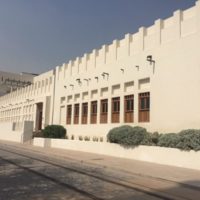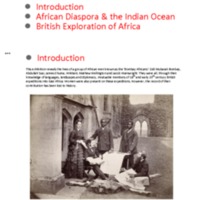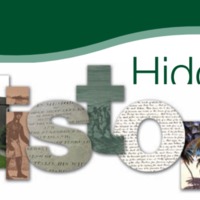
Bin Jelmood House
In the heart of downtown Doha, Bin Jelmood House forms one quarter of a new museum development, opened in 2015. The museum is located in a historic house in the Heritage Quarter of Msheireb Properties large development and forms an integral part of the city's regeneration project. It is the first museum to focus on slavery in the Arab world.
The aim of Bin Jelmood House is to raise awareness of human exploitation and to play a pivotal role in its abolition. It also provides a space for reflection on the continuing struggle and perseverance of different groups around the world, as well as acknowledging the long role that enslaved people have played in society, economically, socially and culturally.
The displays take the visitor back in time to discover how slavery has spread and developed over thousands of years. Visitors can engage with the stories of the origins, capture, transportation and daily tasks of the people who served in bondage, specifically those who did so across the Indian Ocean. The museum also examines the role that Islam has played in the treatment of enslaved people and their eventual emancipation.

Bombay Africans
Bombay Africans 1850-1910 was exhibited at the Royal Geographical Society as part of the wider ‘Crossing Continents: Connecting Communities’ project, which with community partners aimed to develop new resources to advance the importance of geography. Based on the research of Clifford Pereira and with community consultation partners, Bombay Africans explored the histories of a group of African men who assisted British explorers such as John Hanning Speke, Richard Burton and David Livingstone on mapping expeditions in East Africa in the late 19th century. The name 'Bombay Africans' was given to Africans who had been rescued from the slave ships operating in the Indian Ocean. The exhibition examined the roles of these men in the anti-slavery movement and in Christian organisations like the Church Missionary Society. Focusing on the East Coast of Africa and the slave trade routes in the Indian Ocean, the exhibition also explored enslavement, forced migration, liberation and the African diaspora in the Asian subcontinent.

Hidden History of the Dales
This project was a collaboration between the Dales Countryside Museum in Hawes and North Yorkshire Record Office to research people and places of the Yorkshire Dales connected with Africa, the Caribbean and India. 'Hidden History' collected local stories of slave owners and traders, abolitionists, Africans and Asians who moved to the Dales, and others like the actor Ira Aldridge who passed through. The project included various community activities. Working with actor Joe Williams, pupils from the Wensleydale School explored the life of Olaudah Equiano and performed alongside Joe at the exhibition opening. There were drop-in sessions on exploring family history, carnival costume making, talks and music. The exhibition toured to other locations in Yorkshire, including Boroughbridge Library. The Dales Countryside Museum has continued to collect information relating to individuals who were connected with the Yorkshire Dales and the wider world.